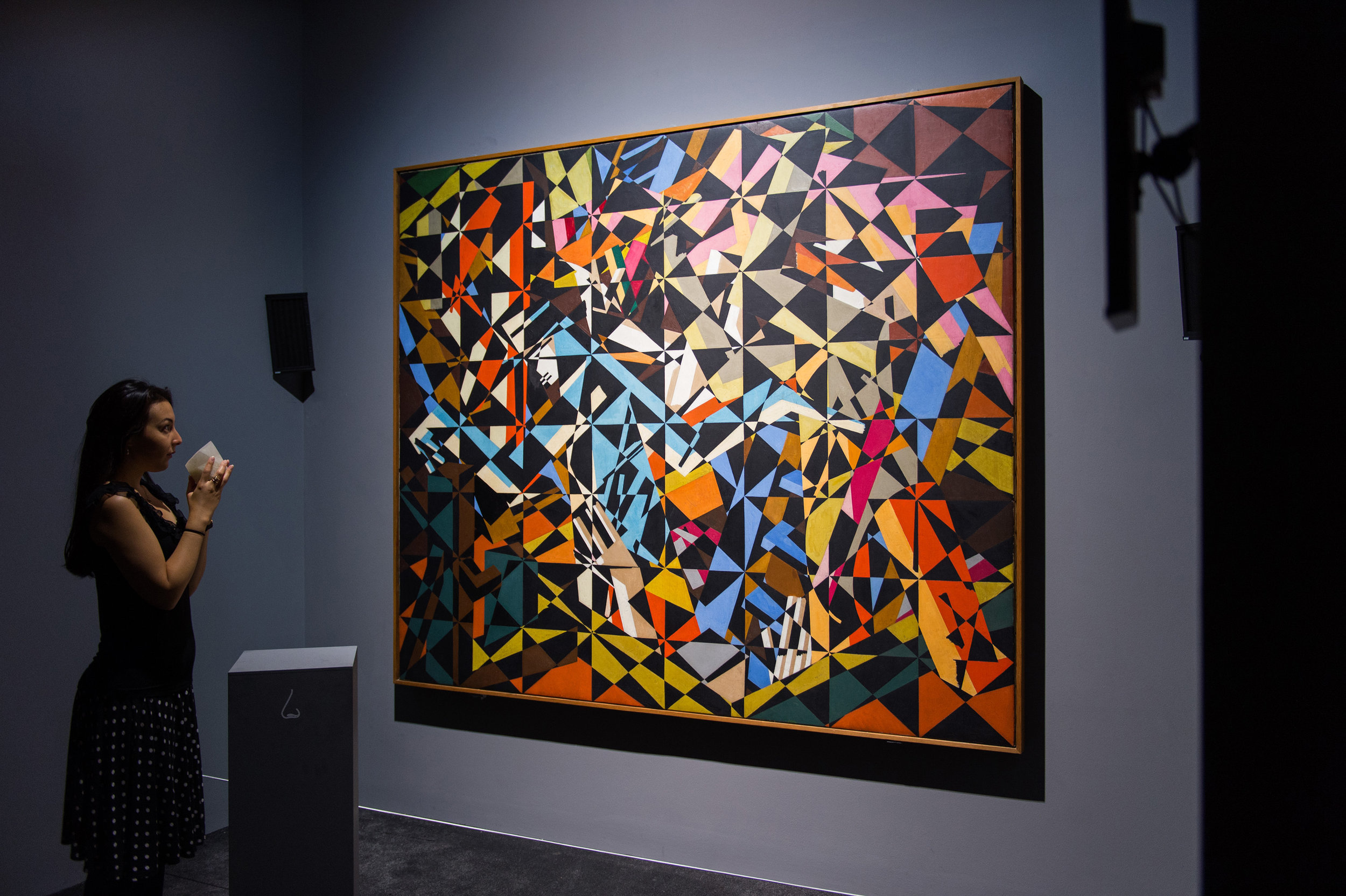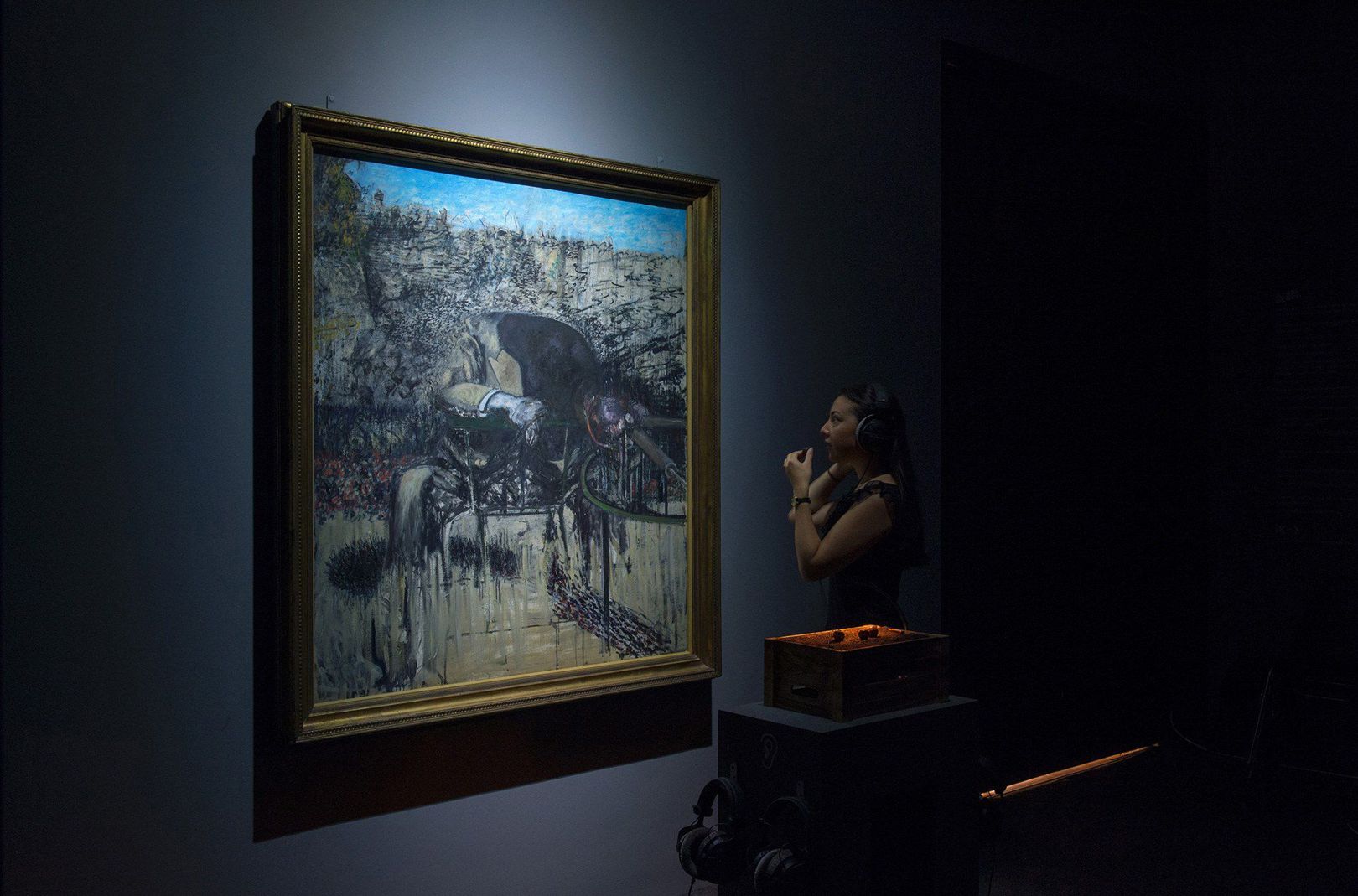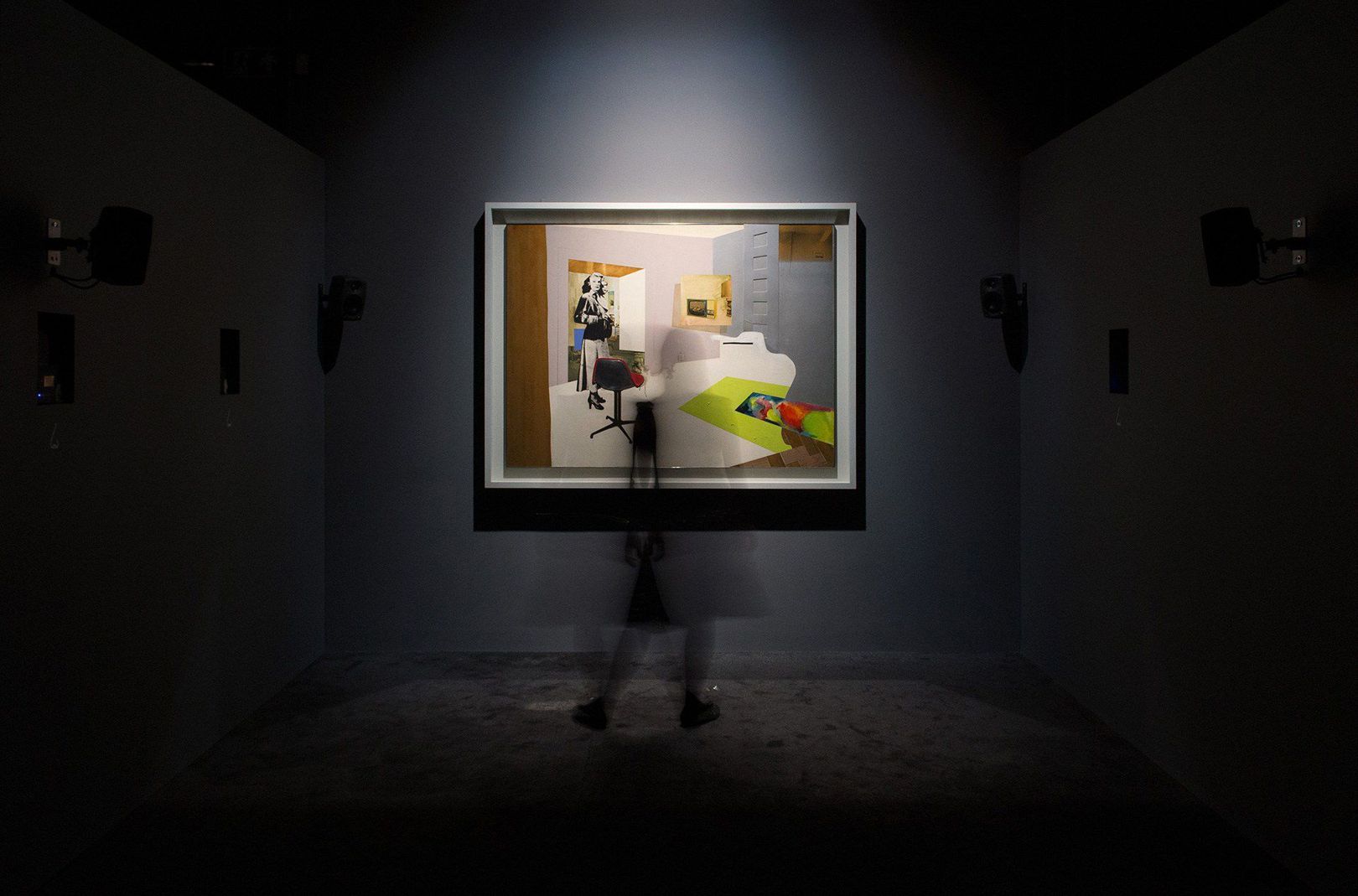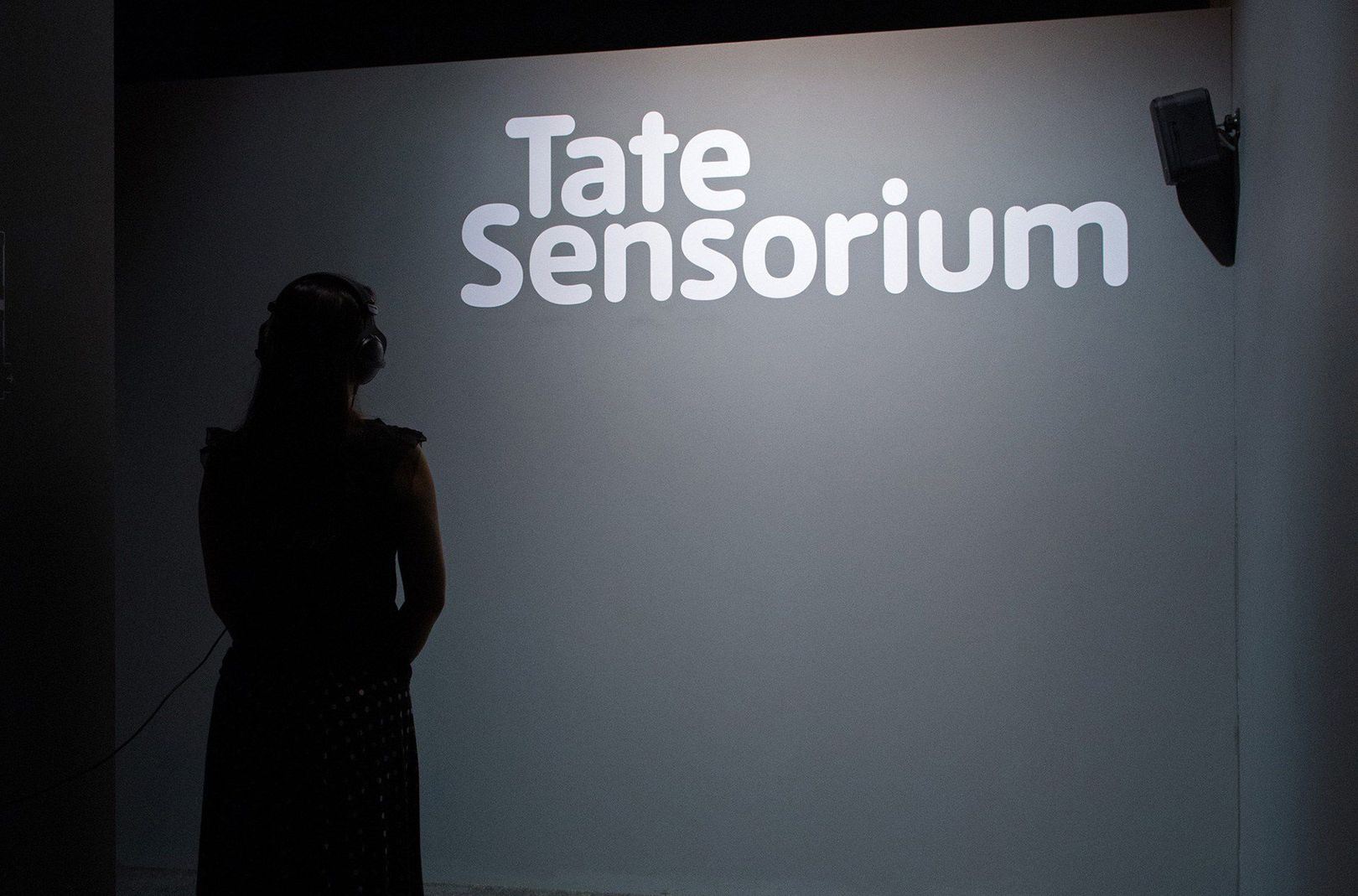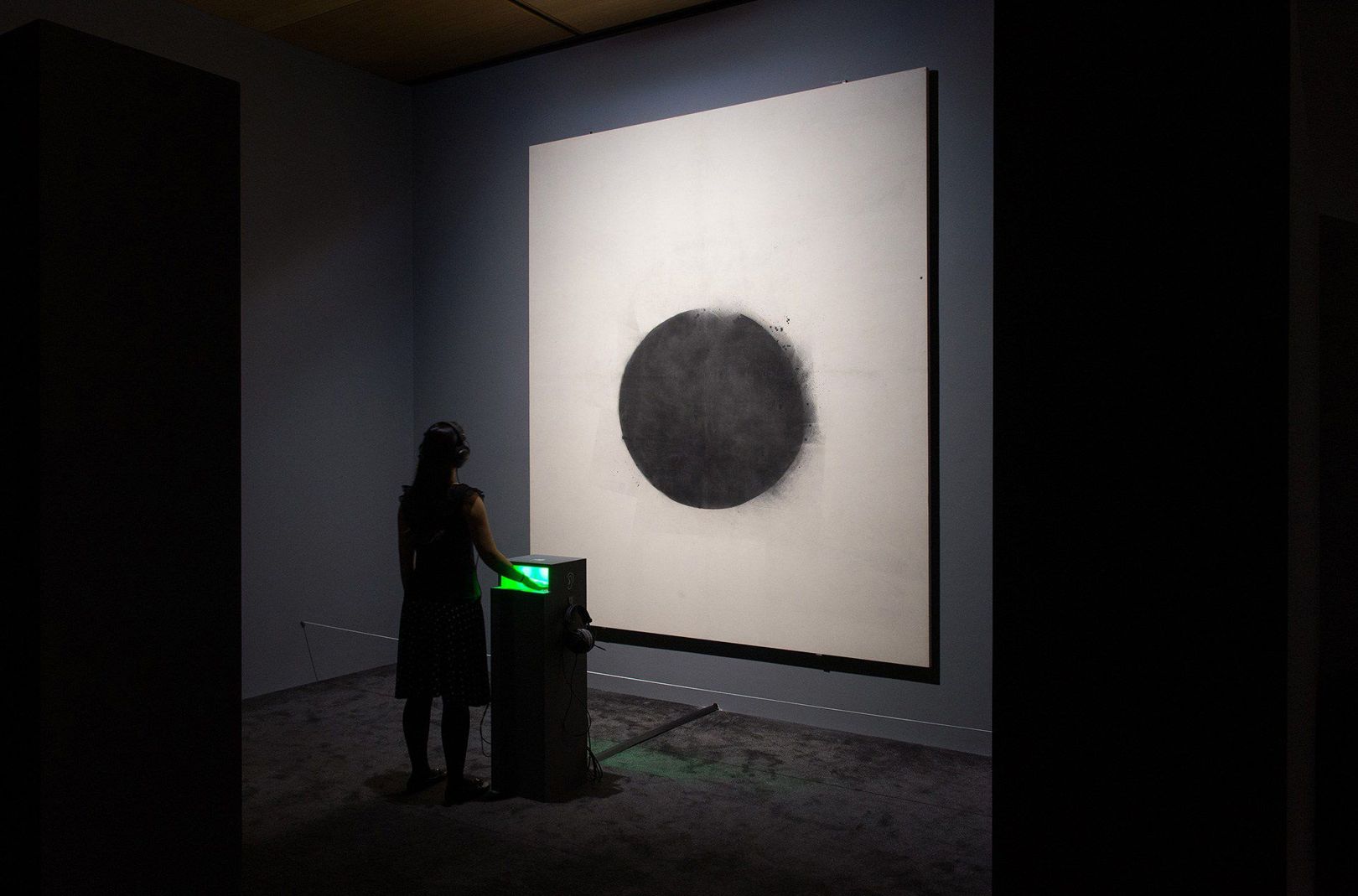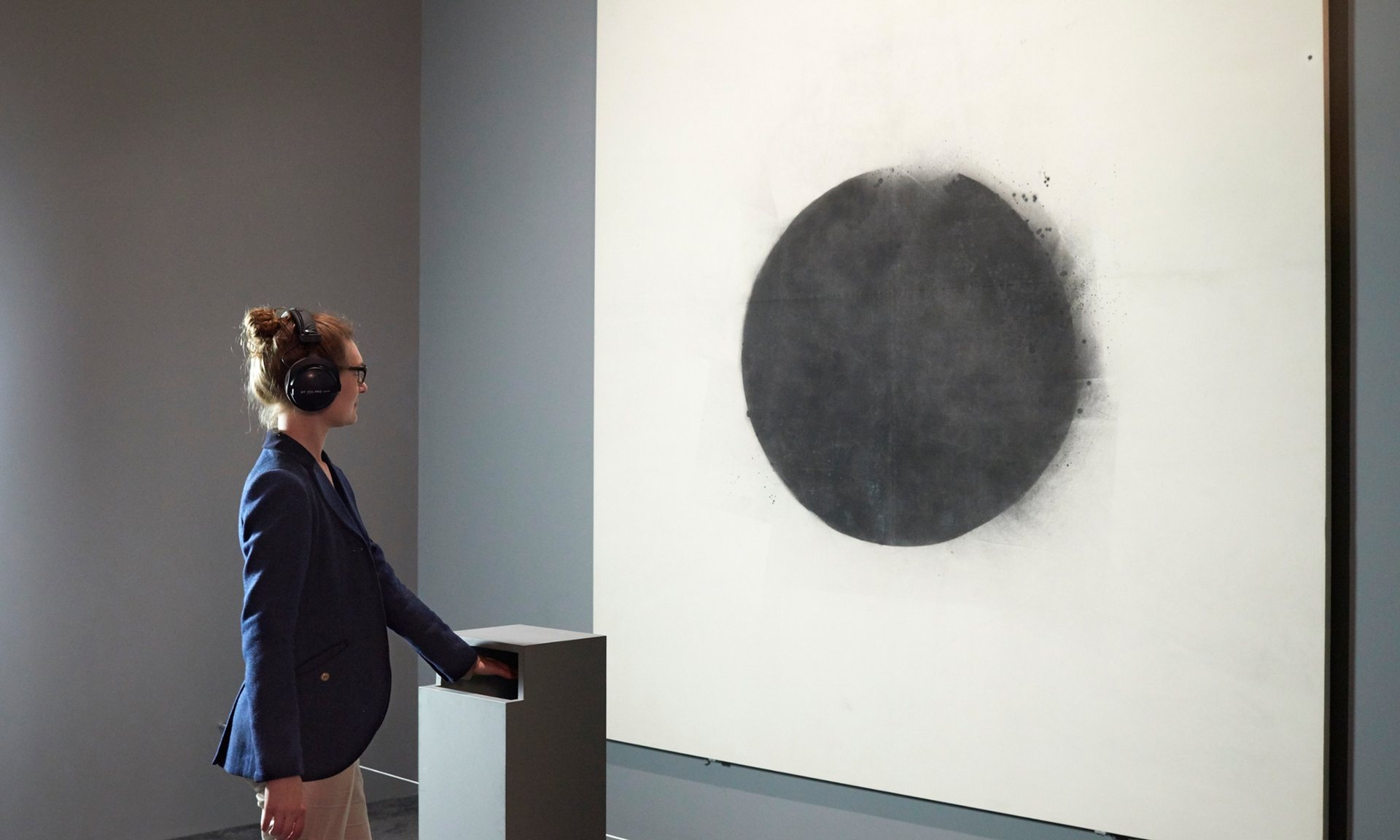A small but mighty exhibition that draws together experts in sound, taste, scent and touch as well as lighting and theatre. The Guardian
Tate Sensorium was an immersive exhibition at Tate Britain (26 August – 4 October 2015) that allowed visitors to engage with paintings from Tate’s collection in a multisensory experience inspired by the artworks. Sound, smell, taste and touch were used to highlight different aspects of each painting and explore the way the senses interrelate to influence our overall gallery experience.
Recipient of IK Prize 2015 (presented by Tate for an idea that uses innovative technology to enable the public to discover, explore and enjoy British art from the Tate collection in new ways) Tate Sensorium was produced by creative studio Flying Object in collaboration with a cross-disciplinary team including audio specialist Nick Ryan; master chocolatier Paul A Young; scent expert Odette Toilette; interactive theatre maker Annette Mees; lighting designer Cis O’Boyle; and the Sussex Computer Human Interaction Lab team lead by Dr Marianna Obrist at the Department of Informatics, University of Sussex.
“What we are doing is testing out, with the public, a new way of experiencing art, a new way of presenting art,” Tony Guillan, multimedia producer for Tate Media.
Featuring works by four celebrated figures in twentieth-century painting, Francis Bacon, David Bomberg, Richard Hamilton and John Latham, the display encourages a new approach to interpreting these paintings, using the senses to trigger both memory and imagination. Key technological components include the use of Binaural and directional audio to produce 3D sounds, a perfume release system to heighten scent and pioneering touchless haptics technology to create the impression of tactile sensations.
The result is convincing; the sounds and smells manage to give extra depth to all the four pieces. The scents for Hamilton's 1964 collage are original period hairspray and wood polish. Wired Magazine
Visitors are given the option to track their response to the display by wearing biometric measurement devices that record the emotional impact of the experience. These wristbands monitor electrodermal activity, a measure of perspiration, which indicates how calm or excited the wearers are. On leaving the experience, each visitor is awarded a tailored summary of how their body reacted to the exhibits and invited to explore the rest of the gallery using the theme of the senses as a guide.
Kerstin Mogull, Managing Director, Tate said: “The IK Prize was originated to celebrate digital creativity and Tate Sensorium encompasses this in its entirety. Tate Sensorium's extraordinary, immersive experiences give visitors a fresh way to encounter and engage with iconic works of art. Visitors can expect a unique gallery experience.”

